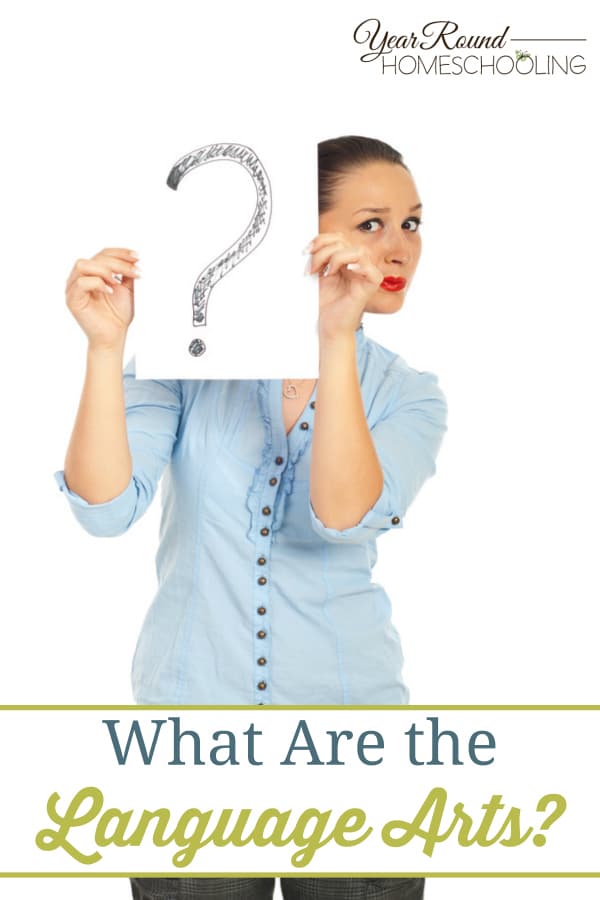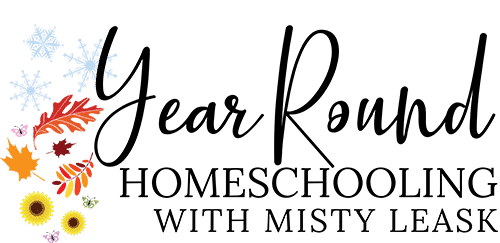We know we’re supposed to teach Language Arts, but what are they? What is their significance and how important should they be in our homeschooling? For many years, it was understood that Language Arts consisted of 4 basic strands: reading, writing, speaking, and listening. The National Council of Teachers of English (NCTE) now states that there are 6 Language Arts:
- Listening
- Speaking
- Reading
- Writing
- Viewing
- Visually Representing

Listening
This skill begins in the womb, at approximately 16 weeks gestation. It is honed throughout childhood. It truly is a miraculous process, the ability to distinguish sounds and language developing into the ability to pair these word sounds with concrete and abstract definitions. Have you ever wondered at the mystery of a child learning the word “Love”? They go on to understand full sentences and then full lectures. It’s beautiful, really.
Speaking
This is deeply related to listening. It begins with a baby’s cry, expressing a need in the only way he knows how. Its development is seen in a baby’s attempt to mimic facial expressions and then sounds. It continues to develop and they go from saying, “Mama” to giving moving speeches and singing operas. Again, incredible. Let’s pause to appreciate that you’ve been teaching two major language arts since before your child was born.
Reading
Students begin with letters representing sounds and proceed to understanding the written word. Our brains and personalities are shaped through literature and persuasive writing. They can be shaped good or ill. It is not enough to say, “At least he’s reading”, while ignoring the quality of what he’s reading. We are always learning when we read, throughout our entire lives. It is easier to learn how to filter edifying reading material at a younger age than as an adult. There are incredible resources available to help parents find great books for children of all ages.
Writing
Most often, this is what we think of when we talk about Language Arts. We focus a lot on the ability to express language with the written word. Spelling, Penmanship, and Grammar come together to express our thoughts, feelings, and ideas. We must remember that what we’re expressing matters. We learn these skills so that we can express things in a way that can be well understood. Orderly and rich thoughts are as integral to writing as orderly grammar and good spelling. I tell my students, “We are learning this because God made you with incredible thoughts and a unique personality. I want the world to hear those thoughts and they’ll never be able to follow you or respect your wisdom if it is not communicated with skill.”
Viewing
This is like reading, but without words. Words can be involved, but they aren’t necessary. Thoughts and feelings are communicated in other ways. This skill requires processing information through visual media, such as photographs, paintings, maps, graphs, or even the silver screen.
Visual Representing
This is to Viewing what Writing is to Reading. Thoughts are conveyed visually, though not necessarily with written words. Students develop this skill in many ways, such as acting out skits, drawing pictures, sculpting, and diagramming.
The last two fall under the label Visual Literacy, which surprisingly has been around for a long time. A very long time. For centuries, theories have abounded on the way our brains process information according to different visual formats. While the phrase itself has only been around since the 1960s, the concept of visual literacy is observable all the way back to the ancient cave paintings of Lascaux, France. More recently, this element is recognized as increasingly important as students are involved with virtual learning tools.
Applying these Arts
We tend to lose sight of these being natural art forms during the necessary stage of teaching the required skills. The struggle to trump Process over Content is common. It’s a hard balance to maintain. The best advice I can give for this is to remember why you’re teaching the skills in the first place. It is not so that he can ace the SAT. It is so that he can grow and learn through great literature and express himself to the glory of God with clear and moving communication.
How many of the language arts do you include in your homeschool?
